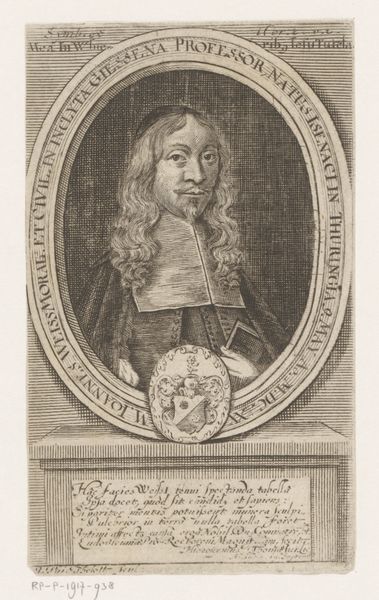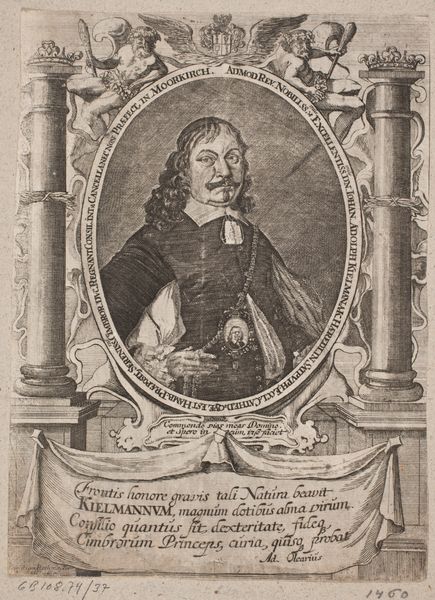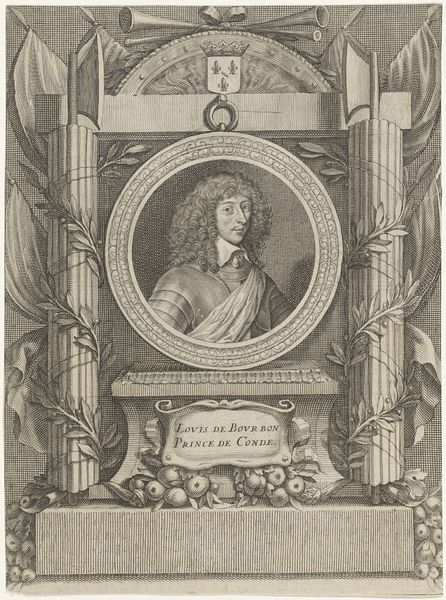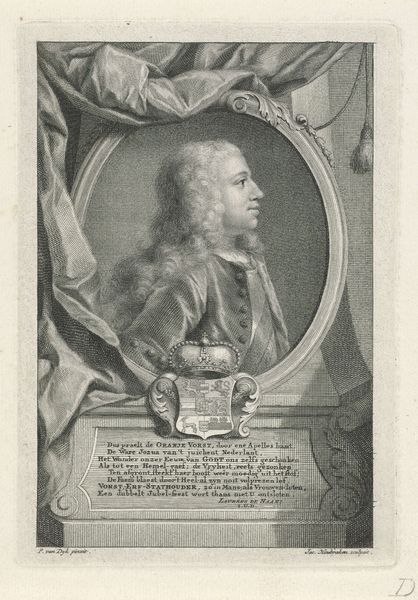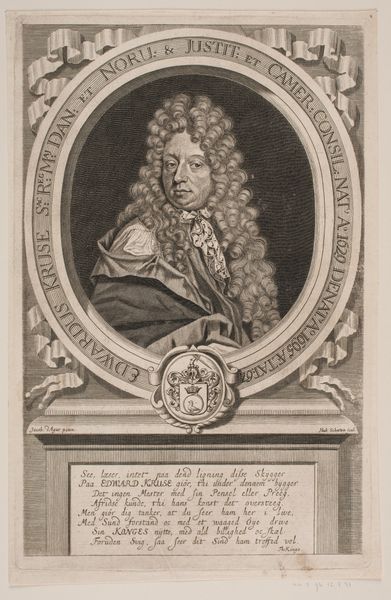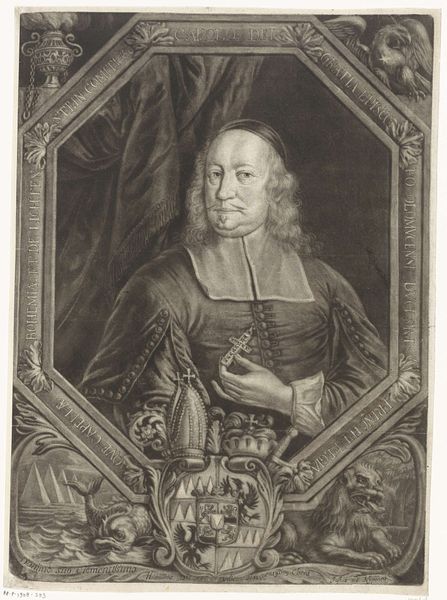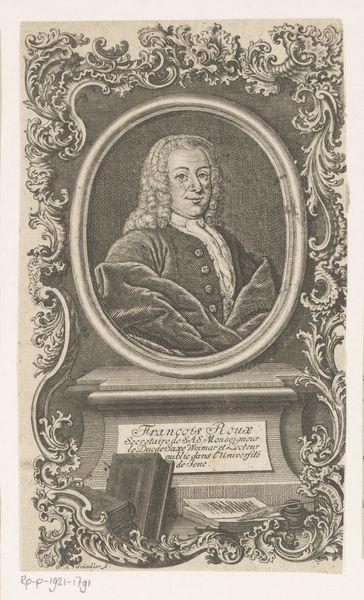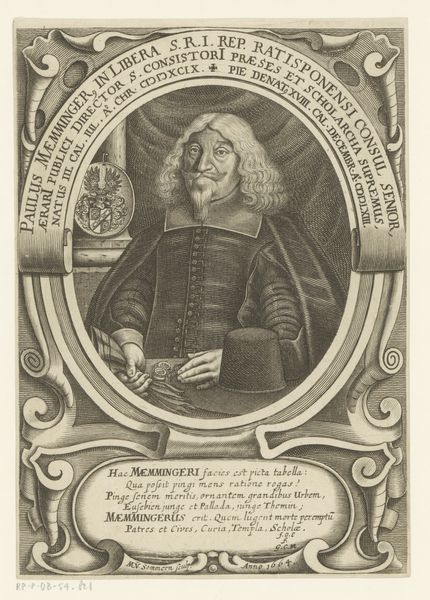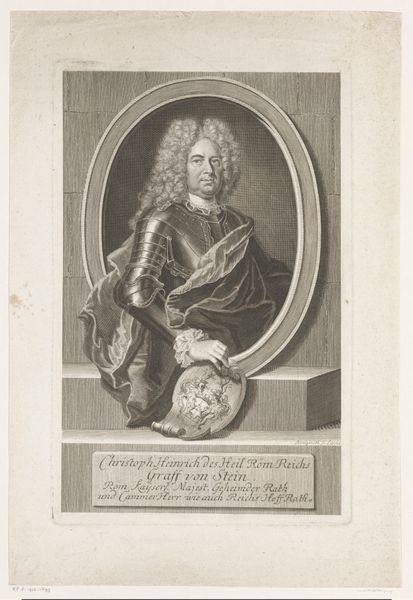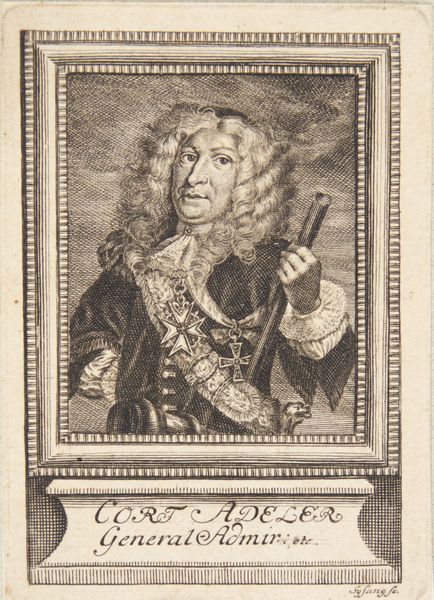
print, engraving
#
portrait
#
baroque
# print
#
academic-art
#
engraving
Dimensions: 238 mm (height) x 158 mm (width) (plademaal)
Editor: Here we have Albert Haelwegh's "Peder Juel," an engraving dating back to 1657 or 1658. The formal setting makes it feel like a standard Baroque portrait, but something about the almost caricatured features gives it a strange vibe. What do you see in this piece? Curator: The artist renders Peder Juel against the backdrop of Denmark's evolving political and social landscape. It's essential to recognize that portraiture like this wasn't simply about capturing a likeness, but about constructing and projecting an image of power and legitimacy. The very act of commissioning a print like this tells us something about Juel's ambition, perhaps even anxieties, in the context of succession and alliances. Considering the format and era, how do you see its political message versus the traditional role of the family portrait? Editor: So, you're suggesting this wasn't just a family thing? Curator: Exactly! It points to an appeal beyond familial ties. How does the medium -- an engraving intended for wider distribution -- shape its message? Think about it: portraits like these were powerful tools for circulating images and solidifying status, even forging political connections. Editor: I didn’t really consider it beyond being just a family representation of someone’s face. It definitely broadens my views to hear that this can show how historical art pieces also contribute as a visual language. Thanks! Curator: Absolutely. It goes to show, doesn't it, that looking beneath the surface reveals a powerful intersection of art, identity, and the socio-political milieu?
Comments
No comments
Be the first to comment and join the conversation on the ultimate creative platform.
